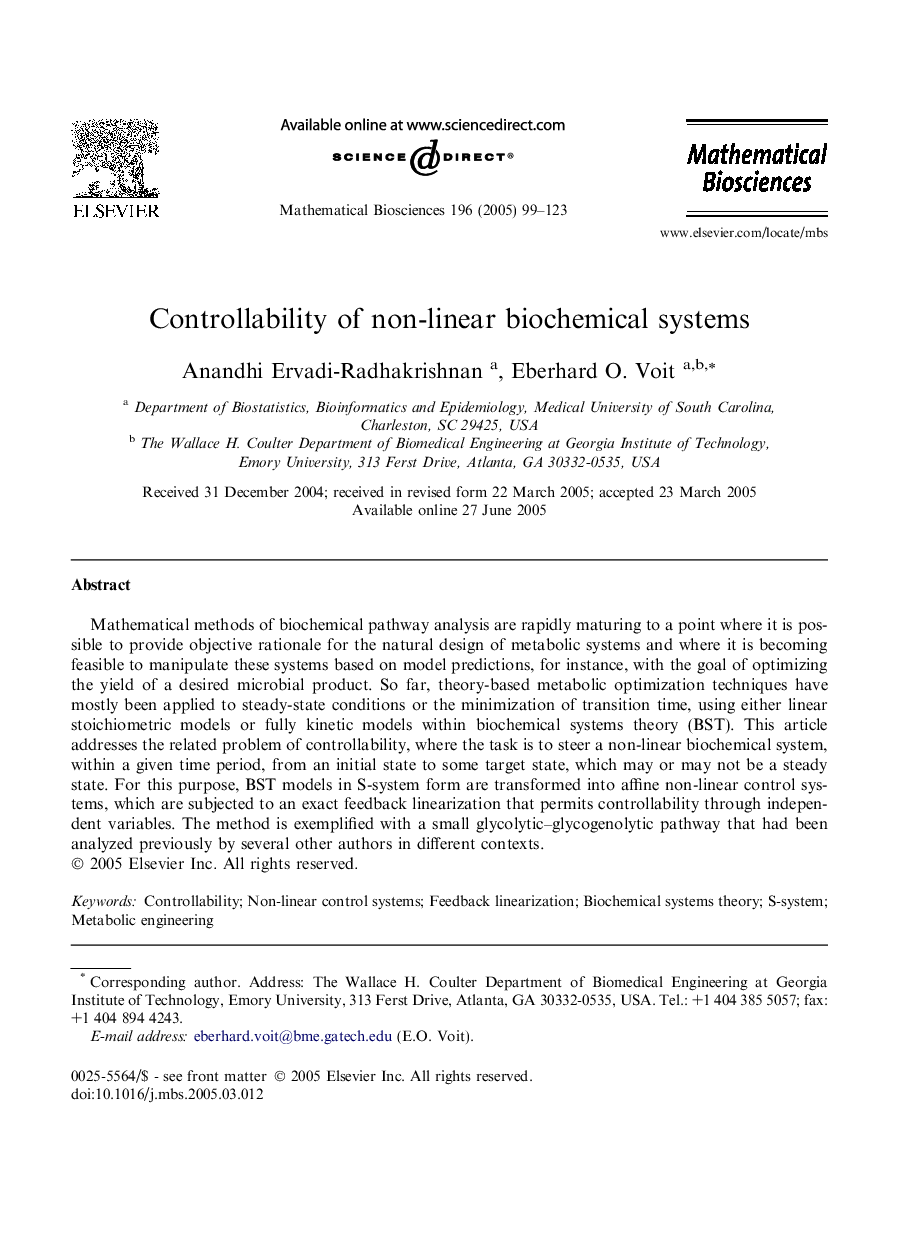| Article ID | Journal | Published Year | Pages | File Type |
|---|---|---|---|---|
| 9471079 | Mathematical Biosciences | 2005 | 25 Pages |
Abstract
Mathematical methods of biochemical pathway analysis are rapidly maturing to a point where it is possible to provide objective rationale for the natural design of metabolic systems and where it is becoming feasible to manipulate these systems based on model predictions, for instance, with the goal of optimizing the yield of a desired microbial product. So far, theory-based metabolic optimization techniques have mostly been applied to steady-state conditions or the minimization of transition time, using either linear stoichiometric models or fully kinetic models within biochemical systems theory (BST). This article addresses the related problem of controllability, where the task is to steer a non-linear biochemical system, within a given time period, from an initial state to some target state, which may or may not be a steady state. For this purpose, BST models in S-system form are transformed into affine non-linear control systems, which are subjected to an exact feedback linearization that permits controllability through independent variables. The method is exemplified with a small glycolytic-glycogenolytic pathway that had been analyzed previously by several other authors in different contexts.
Keywords
Related Topics
Life Sciences
Agricultural and Biological Sciences
Agricultural and Biological Sciences (General)
Authors
Anandhi Ervadi-Radhakrishnan, Eberhard O. Voit,
